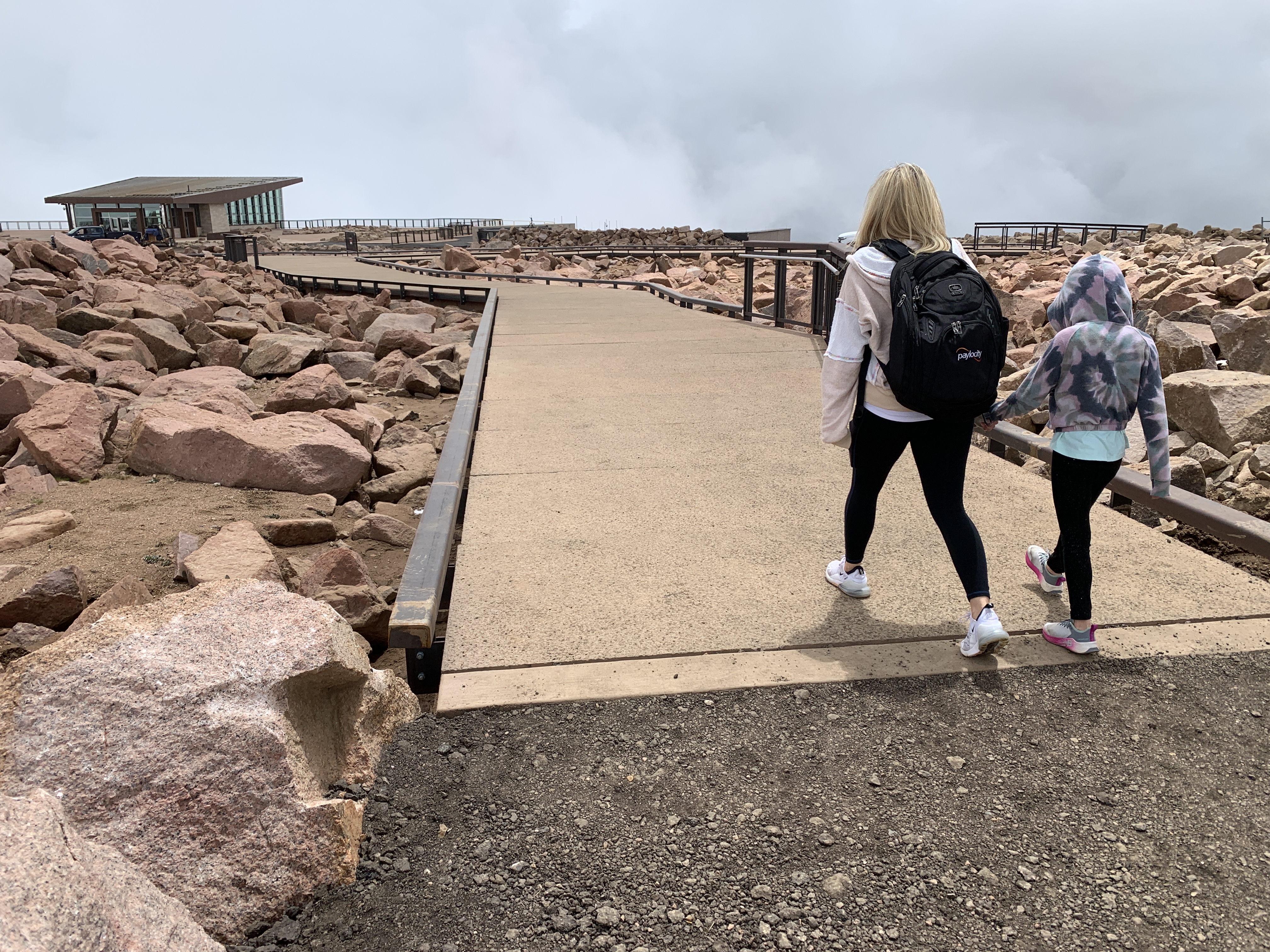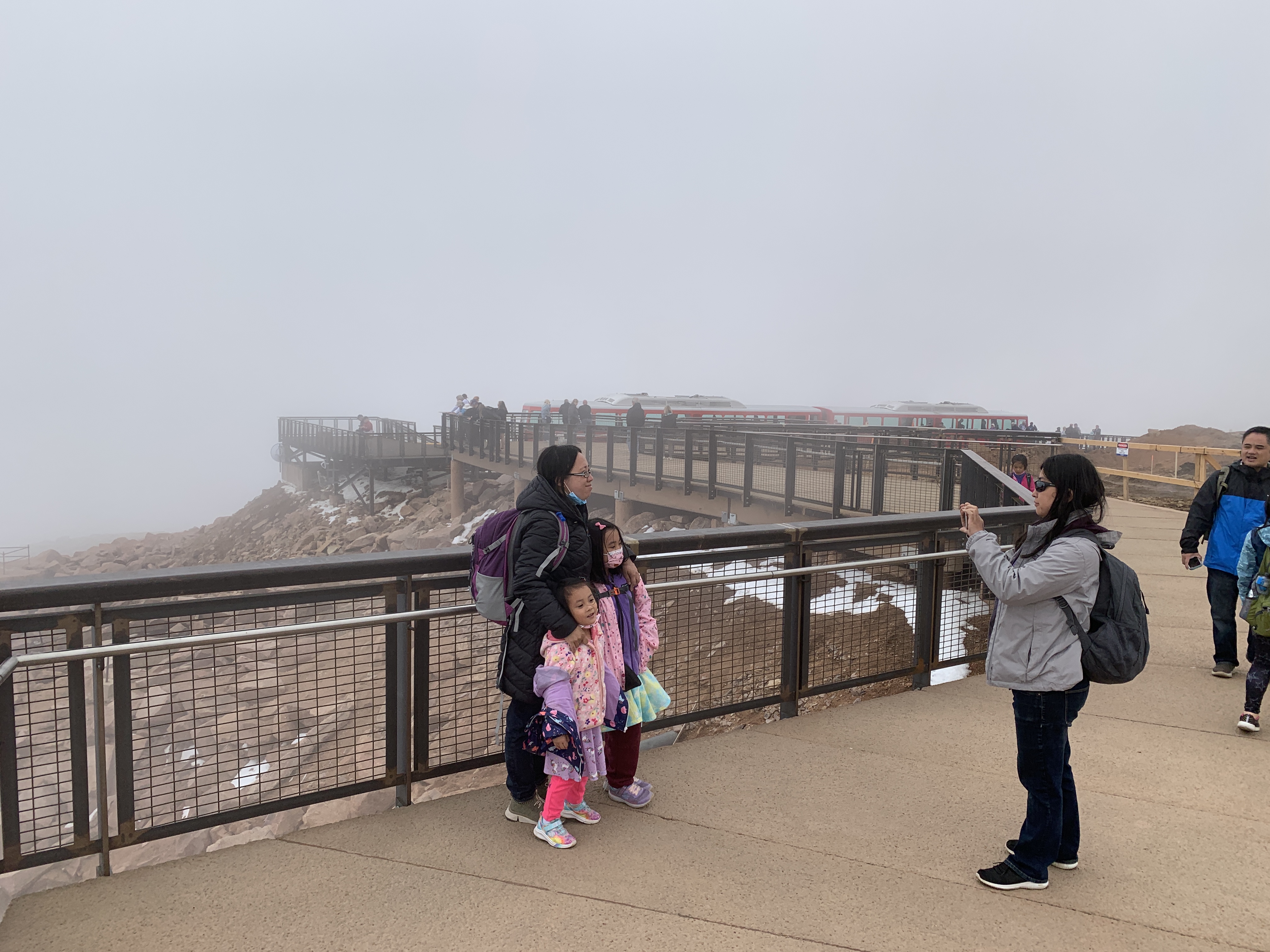Challenge
Perched at the summit of Pikes Peak, America’s Mountain, at a whopping elevation of 14,115 feet, the original Summit House could no longer accommodate its 750,000+ annual visitors each year. It had started to deteriorate and break-down from harsh winters and inclement weather conditions.
The City of Colorado Springs, in partnership with Colorado Springs Utilities, the U.S. Army Research Institute of Environmental Medicine, and the U.S. Forest Service knew the Summit Complex needed low-maintenance, durable materials that would propel the facilities far into the future.
Pikes Peak is also located in a geologically sensitive area, and designers sought to adhere to “Living Building Challenge” guidelines. The Living Building Challenge is a “philosophy, certification, and advocacy tool for projects” and challenges all design professionals, contractors, and building owners “to transform the way we create the built environment radically and eliminate any negative impact on global health.”
All products and materials were thoroughly reviewed and approved before getting delivered to the top of the mountain. Toxic components, such as neoprene, were not allowed to exist in any of the facility building materials - both inside and out.
Solution
PermaTrak’s precast concrete boardwalks were the best option for the project’s walkways and overall project goals of durability, sustainability, and low environmental impact.
From an overall sustainability standpoint, concrete is a durable material, well suited to many environments whether cold, hot, dry, or damp. The reinforced precast concrete PermaTrak system requires very little maintenance, with a design life of 50-75 years.
It’s actually built to get stronger over time and is highly resistant to wear and tear. Unlike other composite or timber options, precast concrete is also a noncombustible material and doesn’t rot, warp, or pull up
As far as the Living Building Challenge guidelines were concerned, PermaTrak’s concrete boardwalks made the most sense. Unlike timber, precast concrete boardwalks are not treated with any chemicals. Further, whereas other boardwalk materials may require the use of sealants or preservative materials, concrete boardwalks do not need anything additional. This eliminates the possibility of the sealants or preservative materials eventually leaching into the surrounding soils.
Precast concrete materials are much less disruptive to the environment when the boardwalk is installed - including less dust, noise, and pollution on the project site.
It is also worth noting that the total ecological impact of concrete boardwalks is kept to a minimum. Generally speaking, natural and locally sourced materials (sand, coarse and fine stone) are used in production whenever possible, which lowers transportation costs and fossil fuel usage.
For the majority of the central walkway, micropiles were used as a deep foundation option for the boardwalk installation. Micropiles are smaller than traditional pipe piles and provide a good choice for areas sensitive to noise or vibration.
Important for the Pikes Peak project specifically, micropiles can be installed with smaller drilling equipment. Since all the construction materials and equipment had to be transported up and down the mountain, this was a key factor for designers in choosing this foundational option.








